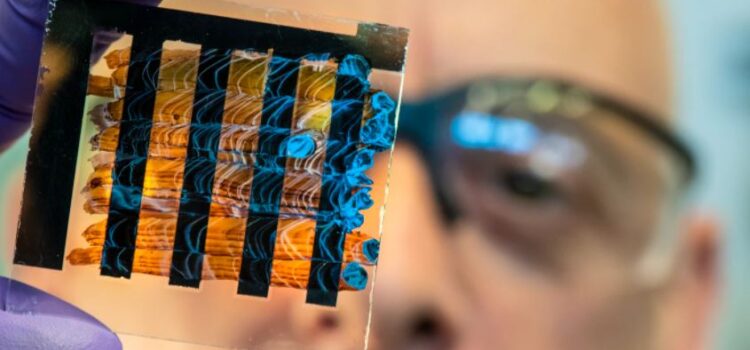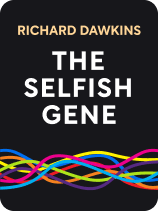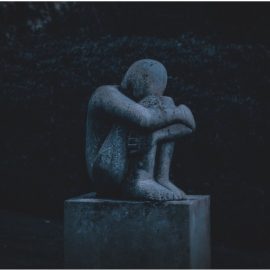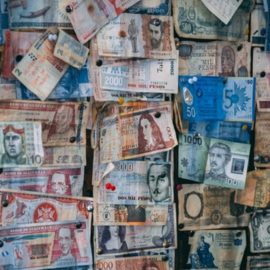

This article is an excerpt from the Shortform book guide to "The Selfish Gene" by Richard Dawkins. Shortform has the world's best summaries and analyses of books you should be reading.
Like this article? Sign up for a free trial here .
Is there such a thing as selfish DNA? How can DNA or genes be selfish and whaat does selfishness have to do with reproduction?
According to The Selfish Gene by Richard Dawkins, every behavior in nature can be explained by the concept of selfish DNA. Genes are just trying to copy themselves so behaviors support that goal.
Keep reading for more about selfish DNA and how this theory is muddled by modern genetics.
The Logic of Selfish DNA
All behaviors in nature lead back to genes trying to copy themselves. This is the notion of selfish DNA. Selfishness and altruism can both be explained by animals acting to protect either themselves or their relatives (who will, by definition, share many of their genes).
Note that, due to countless variables, it’s impossible to say exactly what effect a behavior will have on a creature’s long-term chance of survival. Therefore, all of the examples throughout this essay are presented with what we assume the effects of those actions will be.
Emperor penguins demonstrate selfish behavior when they push each other into the water to check for predators before diving in themselves. Meanwhile, bees demonstrate altruistic behavior when they sting to defend their hives—while they may drive off creatures that would have eaten the hive’s food source, the honey, the bees themselves often die in the process.
However, selfishness and altruism aren’t always immediate life-or-death acts. For example, a bird that gives an alarm call upon seeing a predator is being altruistic, because the bird might draw that predator’s attention to itself. It’s a relatively small risk compared to that of a bee stinging an intruder, but it still counts as altruism.
For all the earlier talk of creatures reproducing, it must be understood that the gene is the unit of inheritance—not the creature, species, or population. Therefore, creatures’ selfishness and altruism are both rooted in gene selfishness. This is also known as selfish DNA.
Animals, including humans, are essentially organic machines built by genes, and genes are designed to survive and reproduce. Genes are selfish—not consciously, of course, but those that still exist have out-competed countless other genes. This is ultimately selfish behavior—that is, behavior that benefits the individual at the expense of others.
Genes also show their selfishness because of the fact that altruism toward outside groups is rare, and toward different species is almost unheard of. For example, a human killing another human is one of the worst crimes possible, but we kill animals every day for food, in self-defense, or simply for sport.
Humans are something of a special case when it comes to selfishness and altruism. Unlike other animals, we can be taught altruism and be convinced to go against our basic selfish DNA—although to exactly what extent is part of the ongoing nature vs. nurture debate.
The Complications of Modern Genetics
Sexual reproduction is complicated for many reasons, not least because it, too, seems to contradict the selfish DNA theory.
Some people believe that a gene-centric view of evolution is misguided because it’s the individuals—and all the thousands of genes they contain—that live or die, not the genes themselves. These people argue that biology should be examined at the individual level, not the gene level.
It’s true that, unlike primordial replicators, genes no longer succeed or fail on their own. An organism has thousands of genes contributing to its genetic makeup. Those genes overlap and interact in such complex ways that it would seem more reasonable to refer to them as a collective, like a gene network or something along those lines—in other words, an individual organism.
In fact, that would make sense for everything except sexual reproduction, which gives rise to distinctly different organisms. However, while sexual reproduction rearranges genes, it doesn’t normally change them (there are a couple of exceptions to this, which we’ll get to shortly). Therefore, it’s an effective way for individual genes to survive through multiple generations.
Further complicating the process, at least in humans, is the fact that we have two versions of each gene. Human genes are arranged into 23 chromosomes, but we have two copies of each chromosome—one from each parent (except for X and Y chromosomes in males).
While each gene from each parent codes for the same type of trait, like eye color, the trait itself may be different, such as having brown vs. blue eyes. Different versions of genes that code for the same type of trait are called alleles. Conflicting alleles may result in one being dominant over the other, or in both being expressed to some extent in the organism.
All of these apparent complications can be resolved with a simple comparison: Just as a successful sports team needs to be made of strong players, a successful individual needs to be made of strong genes: genes that enable that creature to survive and reproduce.

———End of Preview———
Like what you just read? Read the rest of the world's best book summary and analysis of Richard Dawkins's "The Selfish Gene" at Shortform .
Here's what you'll find in our full The Selfish Gene summary :
- Why organisms don't matter, only genes do
- How all life forms begin with a replicating molecule
- How species need to balance aggression and pacifism to survive






